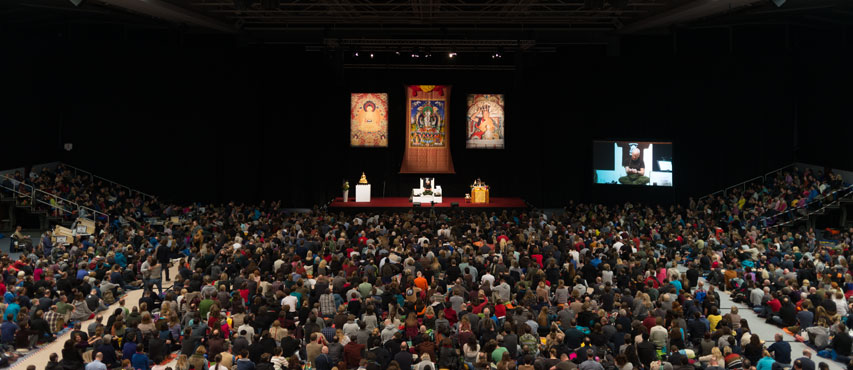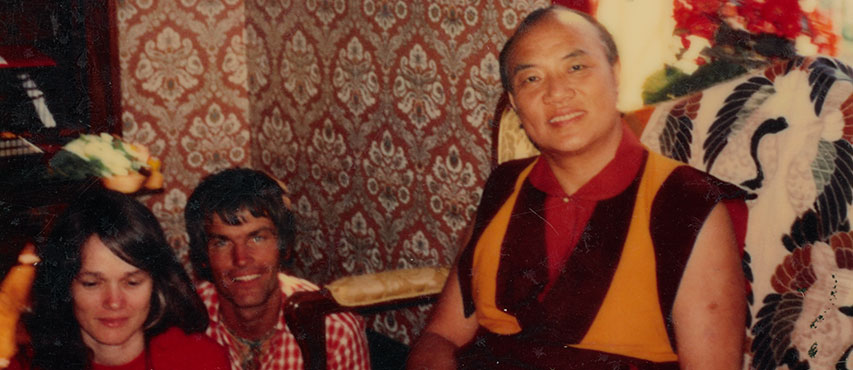Buddhism in the West

“There have never been so many gifted, independent, and idealistic people who have unbroken access to such a variety of Buddhist information as there are today.”
– Lama Ole Nydahl, The Way Things Are
Buddhism is now widespread in the West and known as a major world religion. It started in the East, in northern India. At that time, around 2,600 years ago, India was highly civilized. It resembled ancient Greece, the intellectual ancestor of the modern West, where philosophical schools made an important contribution to society. The Buddha debated with and defeated the best philosophers of his age, many of whom became his students.
Buddha’s teaching was not only theoretical. It also included methods to experience the truth of what he taught. His students were thus able to realize the experience behind the words. Because they were able to pass on the essence of the teachings from teacher to student, Buddhism has been kept fresh and relevant until today.
In the video below, Lama Ole Nydahl, a well-known Western Buddhist master, explains the parallels between ancient Greek thought and Buddhist philosophy.
Lama Ole Nydahl talking about Buddhism in the West
How Buddhism came to the West
The first Western interest in Buddhism was from archeologists and scholars. Indeed, it was thanks to British surveys that many important Buddhist sites in India were rediscovered. A few Western pioneers and adventurers seriously practised Buddhism with native teachers in Tibet and other countries, but in general Buddhism was seen as something exotic, and not considered a useful way of life.
Arguably the first great meeting of Buddhism and Western popular culture was when Zen Buddhism came to America in the 1950s. The witty, paradoxical style of Rinzai Zen, with koans (meditation subjects in the form of riddles) such as “What is the sound of one hand clapping?” made a great impression on the Beat generation. Teachers from Japan established several traditional meditation centers. Despite its strong cultural flavor, Zen, probably the best known Mahayana school, grew steadily in the US and other countries, producing its own Western teachers, fully qualified to carry on the transmission.
Although the Theravada had come West as early as the beginning of the 20th century, it is mainly popular among immigrants from Buddhist countries. The traditional reliance on monks and nuns, who must beg for food on a daily alms round and live under restrictive conditions, makes it difficult to fully integrate into Western society. The teachings typical of the Theravada, however, such as the Four Noble Truths, the Eightfold Path, and an emphasis on material renunciation as a path to enlightenment, are well represented in most popular definitions of Buddhism.
Tibetan Buddhism, with its colorful depictions of buddha forms, use of mantras, and distinctive visual style, is easy to recognize wherever it has spread. And after the bloody Chinese invasion of Tibet in the 1950s forced so many Tibetans to flee, it has spread very far. First offered refugee status in northern India, Tibetan Buddhist teachers later visited Europe, the US, and other countries. The last decades of the 20th century saw several Tibetan monasteries founded in the West, and lay Tibetan Buddhism also spread widely.

Lama Ole Nydahl and his wife Hannah worked since the 1970s to translate and spread the Karma Kagyu lineage of lay Tibetan Buddhism in the West. Having been given the all-important authorization to teach, they kept the traditional meditations and left behind the cultural elements, in order to make the wisdom tradition of the East understandable and relevant to modern Western people. They founded Diamond Way Buddhism for lay students of Karma Kagyu Buddhism, which is now one of the most widespread Buddhist schools in the West.
Today, Buddhism remains the main religion in many East Asian countries, and is flourishing in all spiritually free countries. It serves as a spiritual path for 10-15% of the world’s population.